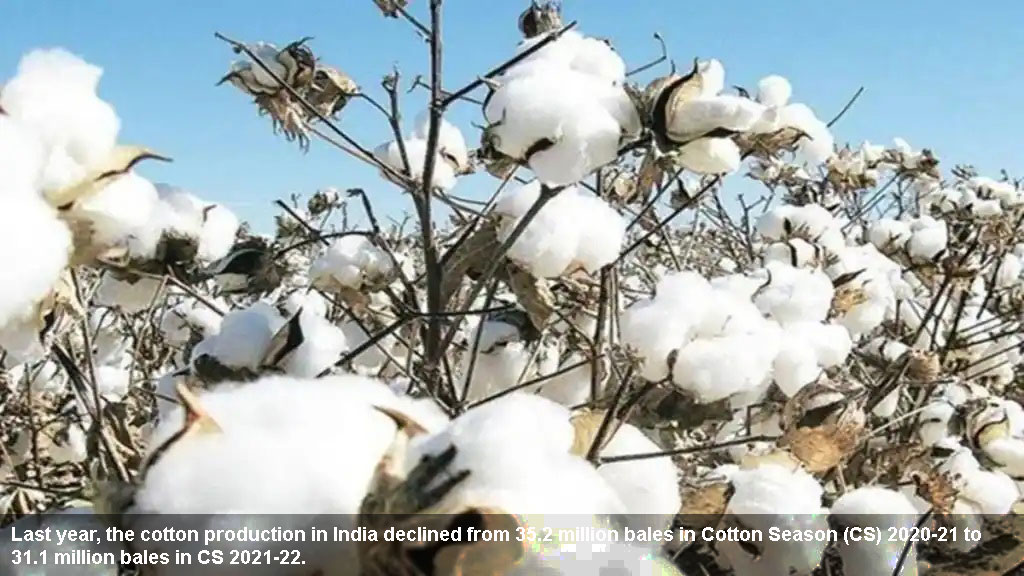
Category: YARNS
Country: India
Region: Asia Pacific
According to a CareEdge report, the Indian cotton yarn industry is likely to register a sales volume growth of 5-7%, while the operating margin is expected to expand by 100-150 bps in FY24 compared to FY23.
By Abhinay Kumar
July 25, 2023 01:45 IST
After a lacklustre year, the cotton industry is keenly anticipating a revival with a sales volume expected to grow by 5-7% over last year. Industry observers maintain that the optimism is pegged on factors such as alignment of Indian cotton prices with international prices, a shift in demand from competing nations, and gradual recovery in demand from China.
Expectations of a good festival season for retailers in the domestic market and a rebound in global demand from downstream industries is also expected to give a leg up to the Indian cotton industry which is trying to recover from the poor performance in FY23.
Commenting on the expected performance of the industry in the coming months, Ashwin Thakkar, vice president, Textile Association of India, said, “The industry is slowly making its way out of the trouble and the coming months are going to be brighter for the cotton industry. People have spent much on travelling and personal care and this festival season is expected to witness a healthy demand for the textile sector, especially the retail business may see a very strong demand.”
He said, “The global demand for Indian products may not see much change in the short term because we do not see any end for the Ukraine-Russia conflict which is impacting the demands in European and American markets which are our major export destinations. But South Asian countries are doing well and may change the demand patterns in the second half of the year.”
According to a CareEdge report, the Indian cotton yarn industry is likely to register a sales volume growth of 5-7%, while the operating margin is expected to expand by 100-150 bps in FY24 compared to FY23. Last year, the cotton production in India declined from 35.2 million bales in Cotton Season (CS) 2020-21 to 31.1 million bales in CS 2021-22. The lower cotton production caused a steep surge in the cotton prices. The average domestic cotton price registered a peak of around `1 lakh per candy (`280/kg) in FY23. The mismatch between the domestic and international prices impacted the cotton exports significantly and India witnessed its lowest cotton yarn exports in a decade. In FY23, India’s cotton yarn export stood at 664,000 tonne against the decade’s highest exports of 1,389,000 tonne in FY22.
Despite troubles last year, the cotton farmers are enthusiastic about the fibre crop. As per the recent data by the Government of Gujarat, as of July 17 last, the farmers have already completed the sowing of cotton for 2.53 million hectare of land in Gujarat. This area is slightly lower than the last year’s area of 2.55 million hectare, but the sowing season will go on for at least two more weeks and it is expected that the total area under the crop will exceed the area last year.
After hitting a high of around lakh per candy, currently, the domestic cotton price is between `56,000 – `57,000 per candy. This price of cotton is in parity with the international prices and will increase the competitiveness of Indian cotton in the global market.
According to PR Roy, a veteran insider who has been at helm of a leading textile company and is current business partner in Diagonal Consulting, “Despite price parity of the domestic market with the international markets, there may not be any significant change in the exports from India because overall demand of crude cotton/ fibre has decreased. Recycling and reprocessing of the cotton is being done at a significant level and the Dollar-Rupee exchange will also play an important role as it is making the exports incompatible for Indian producers.”
He further added, “As a major cotton player in the global market, we are not doing anything special to tap into our export potential. If we want to achieve our full potential then we will have to put our mind and thought into converting the available raw material into high-end finished apparel products. The value addition is necessary because the high-end market has the potential to absorb the products.”
Courtesy: Financialexpress.com
Copyrights © 2025 GLOBAL TEXTILE SOURCE. All rights reserved.